Anatomy Museum (W D Trotter Anatomy Museum)
Department of Anatomy, School of Biomedical Sciences
The Anatomy Museum was first established in 1875, just a few years after the University itself was founded. The link below shares a series of photos depicting the Museum as it is today – a stately artefact in its own right, yet one that holds a wealth of state-of-the-art anatomical specimens and models critical to training the next generation of scientists and health professionals.
Otago On Location: Anatomy Museum
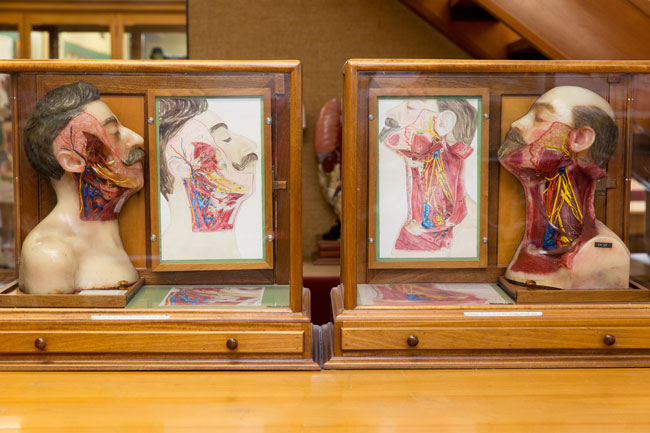
Thomas Kelsey produced these wax models which bear resemblance to Lenin and Stalin. Wax artists based their designs on actual specimens donated for such purposes but the identity of those individuals was disguised in the finished work.
Archaeological laboratories and collections
Archaeology Programme, School of Social Sciences
The Archaeology laboratories are designed for the efficient throughput of archaeological remains from initial processing to detailed post-excavation analysis. There is a controlled-temperature room for drying wet materials. Two large laboratories are used for the processing, identification and analysis of assemblages, and we have both on-site and off-site storage for archaeological collections.
Specialised research facilities include extensive reference collections of faunal, lithic and artefactual material, a spatial analysis lab with Geological Information System (GIS) facilities, a microscopy lab, a petrology lab for the production of thin sections, and an ancient DNA lab run in conjunction with the Department of Anatomy and Structural Biology.
Our Archaeological laboratories
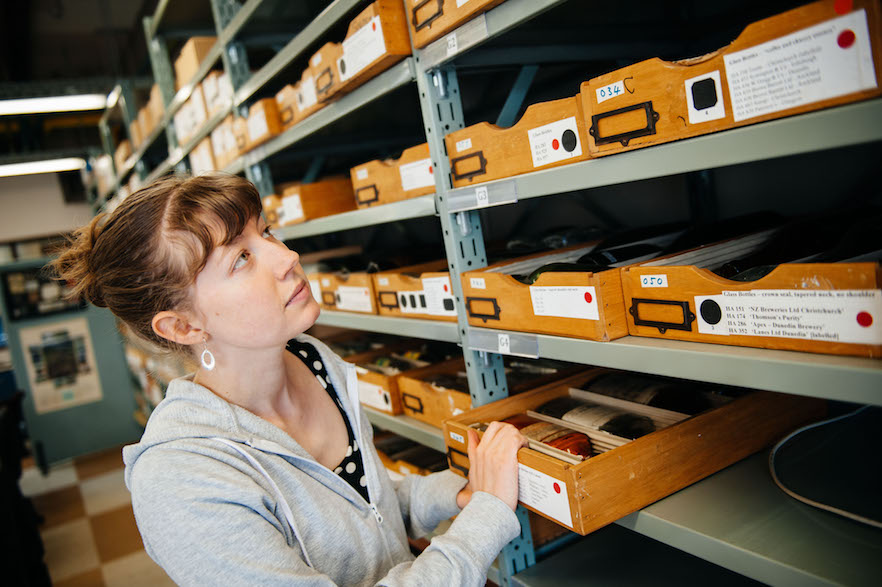
Stored artefacts from early brewers and distillers.
Centre for Innovation
The Centre for Innovation provides an innovative environment for the rapid development of new products and processes with commercial applications.
The building houses a cluster of knowledge-based enterprises within a city that has a distinctive reputation for fostering innovators, especially in the development of biotechnology and IT companies.
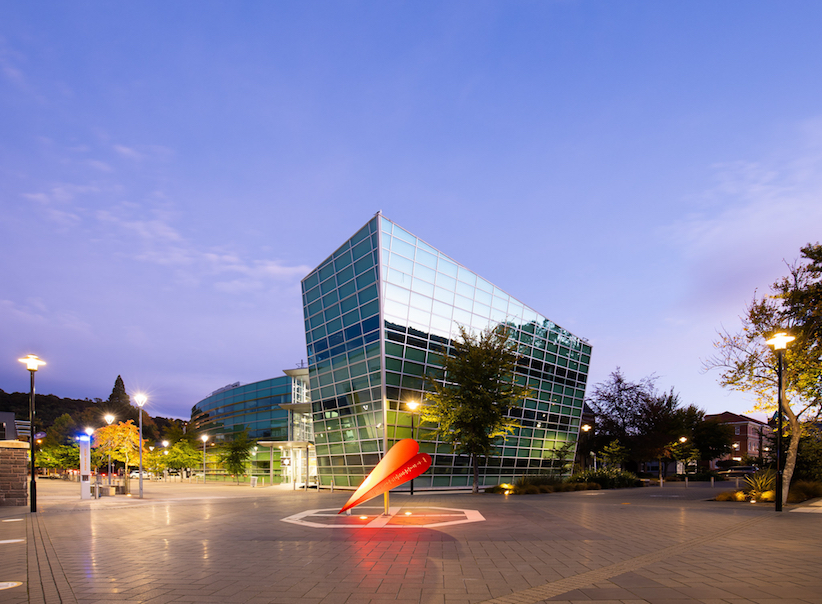
Centre for Innovation building, Castle Street, Dunedin Campus.
Christchurch regenerative medicine and tissue engineering
CReaTE Research Group, University of Otago, Christchurch
Regenerative medicine and tissue engineering combine a patient's own cells with biodegradable scaffolds and growth factors. These therapies may offer considerable advantages over current surgical interventions used to repair or regenerate damaged tissues following trauma or disease. Using advanced 3D scaffolds and in-vitro culture techniques, combined with adult human stem cells, we are attempting to identify the complex cellular environments controlling tissue growth in 3D. We are also researching their application in translating cell-based therapies to the clinic.
The instrument pictured below allows fabrication of implants with anatomical features with precise control over their geometry and internal porosity. This allows simultaneous temperature control of the building platform and up to three printing heads with different biomaterials under sterile conditions. This equipment has enabled the development of multiple advanced bioink platforms, as well as cutting-edge bioprinting technologies.
Possible applications for bioprinted samples aim towards creating living implants for tissue regeneration, and as tissue and disease models for drug screening. It also could enable research of novel aspects of tissue development and pathological conditions in 3D native-mimicking environments.
Christchurch Regenerative Medicine and Tissue Engineering research group
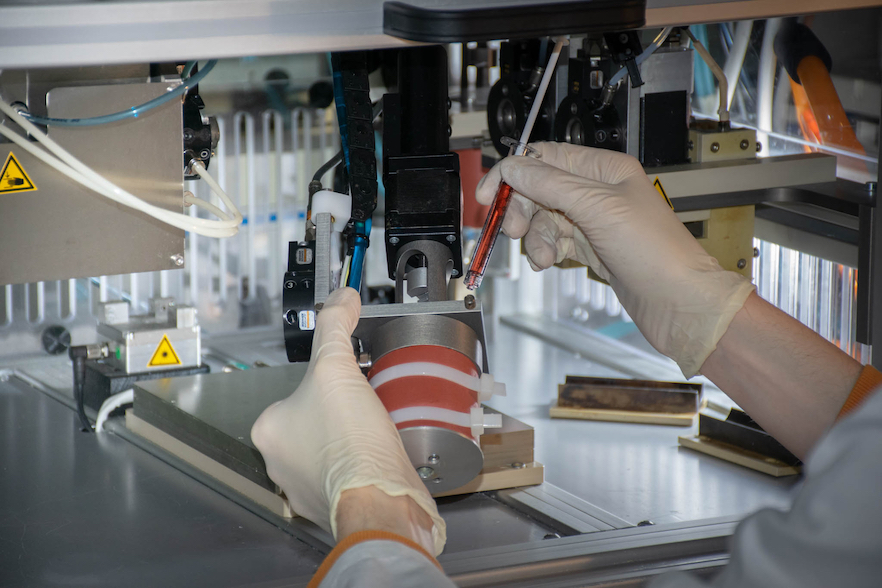
This custom-made 3D-bioprinter enables printing with a variety of biomaterials ranging from biodegradable thermoplastics to hydrogel-based bioinks for living-cell delivery.
Faculty of Dentistry | Te Kaupeka Pūniho
Division of Health Sciences
As one of the world's top-50 dental schools ( QS World University Rankings) our mission is to pursue excellence in research, and to provide high-quality undergraduate and postgraduate education and training – to improve health nationally and internationally.
We teach oral health therapists, dental technicians, and dentists, dental specialists, and researchers, while also providing best-practice dental services to the community in Dunedin and Manukau.
We have the very latest dental technology, including a state-of-the-art 3D Conebeam CT scanner, digital X‑ray systems, high-magnifaction microscopes, and computer-guided implant tools.
We use the latest high-tech bio-compatible materials. Being part of New Zealand's only dental school, many manufacturers come to use to evaluate the latest materials and methods – so we always know the latest, best-possible approaches to dental care.
Take a video tour of our state-of-the-art dental school
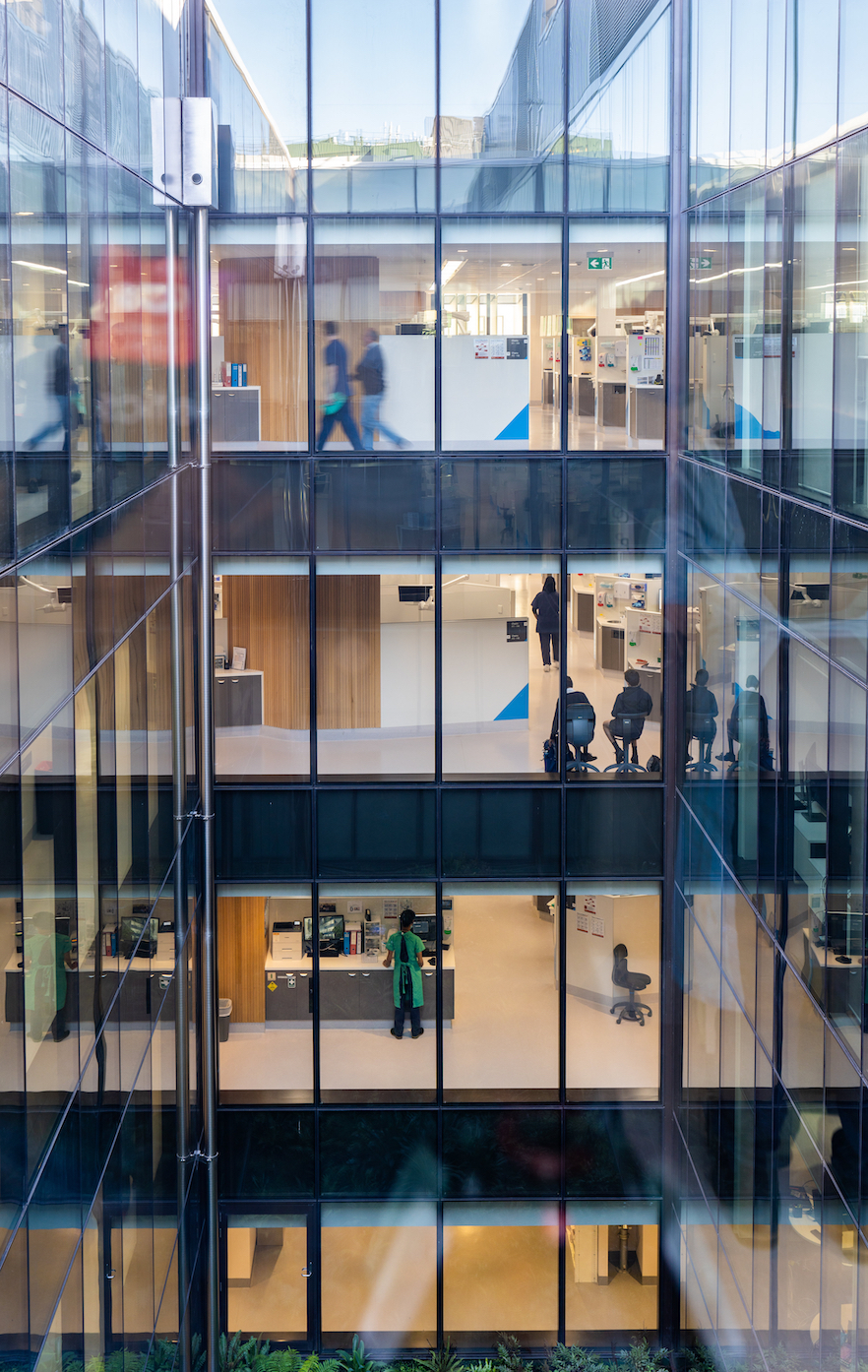 Internal courtyard view of the Clinical Services Building, Faculty of Dentistry, Dunedin campus.
Internal courtyard view of the Clinical Services Building, Faculty of Dentistry, Dunedin campus.
Geology Museum
Department of Geology, Division of Sciences
Our Geology Museum contains large and scientifically important collections of rocks, minerals and fossils - the largest such collection in the South Island.
There are large viewing windows to see fossils being worked on in the Fossil Preparation Laboratory such as whales, dolphins, penguins, and fish.
Collections in the Museum are used by staff and students for research and in undergraduate and postgraduate courses.
The Geology Museum is open to the public five days a week, from 8:30 am to 5 pm.
Geology Museum location and more about our collections
Capturing stories of the past, for the future
Otago researchers uncover New Zealand's first fossils preserved in amber
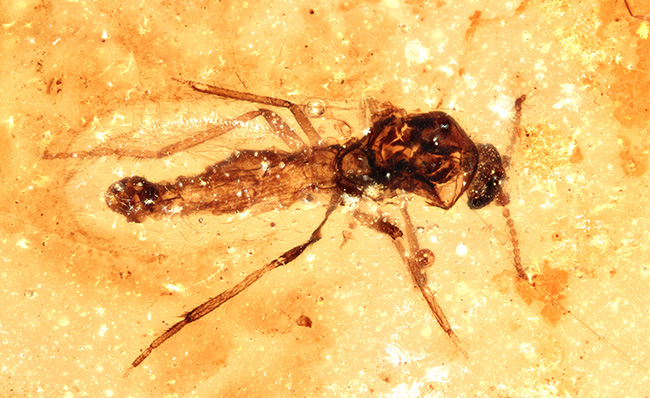
Discovery of insects preserved in amber is shedding new light on our geological and biological history.
Flume facility
School of Physical Education, Sport and Exercise Sciences
This circulating water channel is the only one of its kind in the Southern Hemisphere. Water speed in the flume can be altered to between 0.3 - 3.6 m/s (0.6 - 10.0 knots). This range of speed covers all swimmers with the top speed a swimmer can reach being approximately 2.1 m/s (based on 50m freestyle world record swim time).
Maximum flume speeds also give kayak and canoe paddlers a good workout. The size of the flume allows drag testing to be performed on equipment such as surf skis, paddle boards and rowing shells. Testing of hull coatings and the effect on drag has also been investigated using the flume.
Flume and immersion tank facility
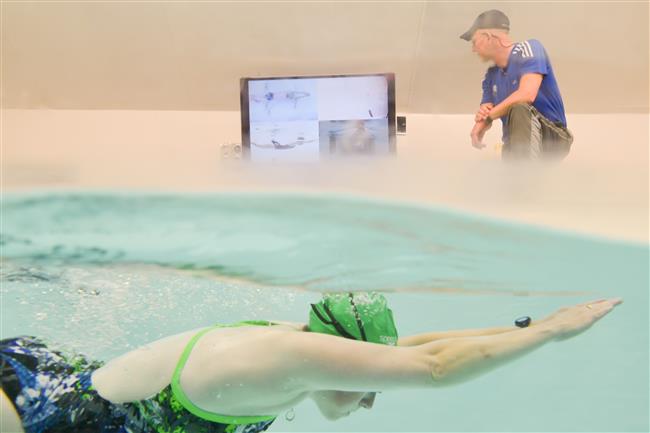
Hocken Library | Uare Taoka o Hākena
University of Otago Library
Hocken's collections celebrate the histories, cultures and natural environments of Aotearoa New Zealand, the Pacific and Antarctica with special emphasis on southern New Zealand.
The collections include archives, books, drawings, journals, maps, music and film, newspapers, paintings, photographs and posters, dating from the seventeenth century to the present day.
Dr Hocken's gift forms the foundation. Since opening in 1910, the collections have continued to grow with ongoing acquisition of heritage and contemporary material.
We are a reference-only research library, archive and gallery open to the public.
Hocken Collections - Uare Taoka o Hākena
See also:
University of Otago Library
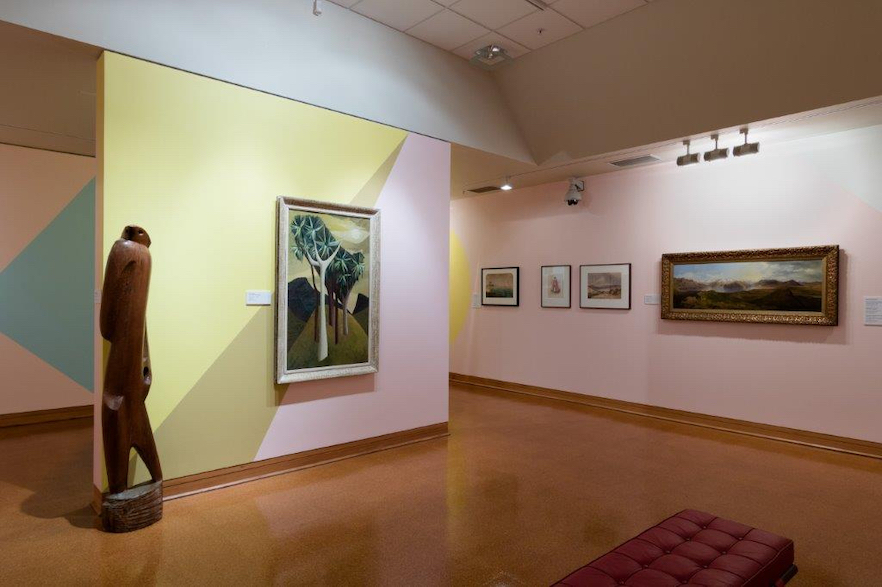
'Continuity and Change: The Hocken's art across time', 9 December 2017 – 27 January 2018, exhibition installation view, courtesy of Hocken Collections, Uare Taoka o Hākena, University of Otago. Photo: Iain Frengley.
Marine Studies Centre
Department of Marine Science, Division of Sciences
The Marine Studies Centre provides a window into marine research at the University of Otago. The Centre showcases local marine life and offers marine education programmes for all ages.
Our mission is to foster understanding and appreciation of New Zealand's unique marine environment and responsibility towards its conservation.
We are based in Portobello on the Otago Peninsula, where there has been a marine research station for over 100 years, starting with a fish hatchery in 1904.
New Zealand Marine Studies Centre
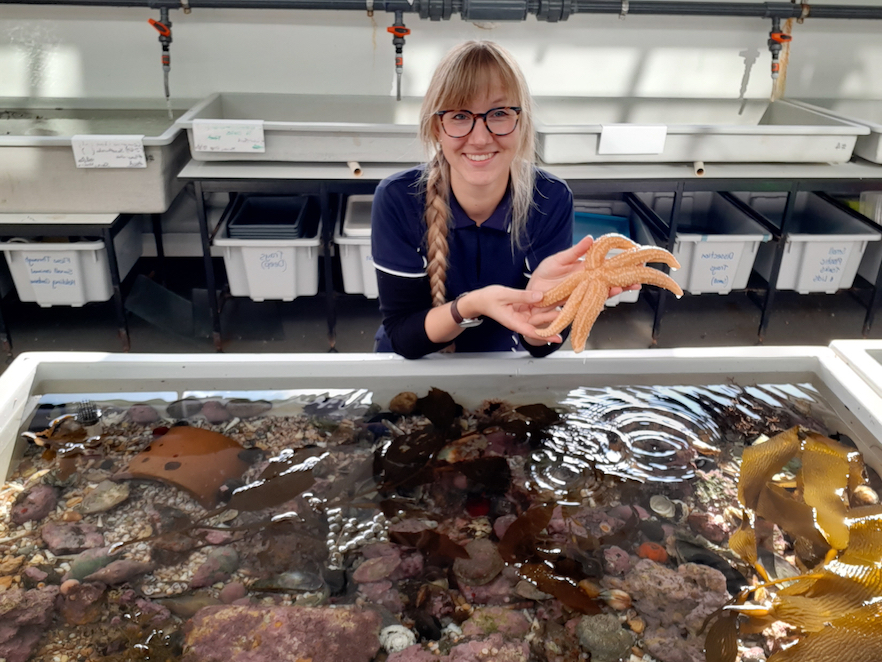
Hanna Ravn, Professional Practice Fellow, holds a seastar from one of our touch-tanks, at the New Zealand Marine Studies Centre.
Mellor Laboratories
Department of Microbiology, School of Biomedical Sciences
Inside the Mellor Laboratories building, large windows provide views into two cutting-edge, adaptable super-laboratories that can each cater for 112 students or two classes simultaneously – improving about 2000 first-year students' experiences weekly, and catering for growth.
The building also contains purpose-built research labs for senior students and six specialties, and also networking and collaborating areas.
Clean Lab
A world-class research facility producing filtered air 100,000 times cleaner than outside air, is a recent addition to the University of Otago's Mellor Laboratories, and will enhance Otago's established reputation in trace metal research.
The Clean Lab's high design specifications include the filtered air being renewed at a rate of 100 changes per hour, positively pressured rooms that ensure any residual air moves from the inside to the outside of the labs, and access to high-purity water on-tap for processing samples. The Clean Lab will support a growing diversity of applications from earth sciences to archaeology, and forensics to climate change.
World-class Clean Lab opens at Otago
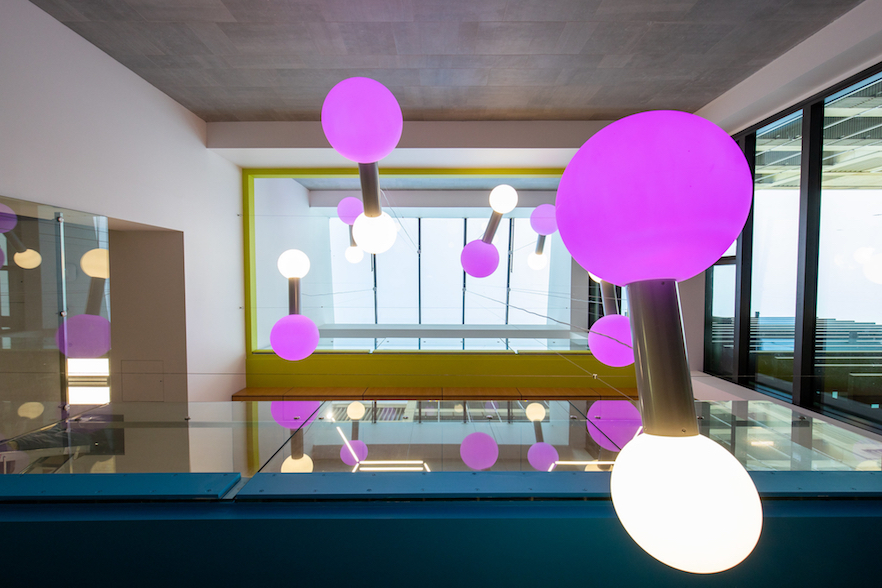
The Mellor Laboratories building houses the Clean Lab, superlabs and specialty research labs.
Nicholls Clinical Research Centre
Christchurch Heart Institute, University of Otago, Christchurch
The Nicholls Clinical Research Centre investigates neurohumoral aspects of common cardiovascular diseases including:
- Myocardial infarction
- Hypertension
- Atrial fibrillation
- Heart failure
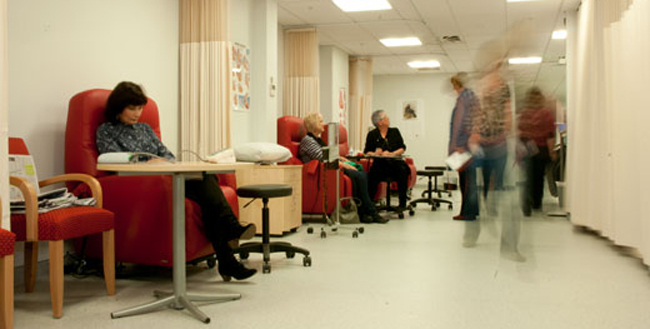
Research study participants come to the centre to help advance the understanding of cardiac health and to contribute to raising the standard of cardiovascular care.
Otago Museum classics collection
Otago Museum and the Classics programme, School of Arts
A special relationship with Otago Museum offers exciting opportunities for research and study in the Classics programme.
Otago Museum possesses the finest collection of ancient Greek vases and Roman coins in New Zealand. The wider Classics collection includes pottery, coins, metals, and glass from the cultures of the ancient Mediterranean. It also includes replicas of iconic objects and statues.
Staff and students arrange access to collections in storage through their Classics papers, research projects, Division of Humanities (HUMS) internship opportunities, and Classics Society membership (CLASSOC). Classics staff and students also contribute to the enhancement of those collections through their research and study.
Otago Museum collections provide unique opportunities
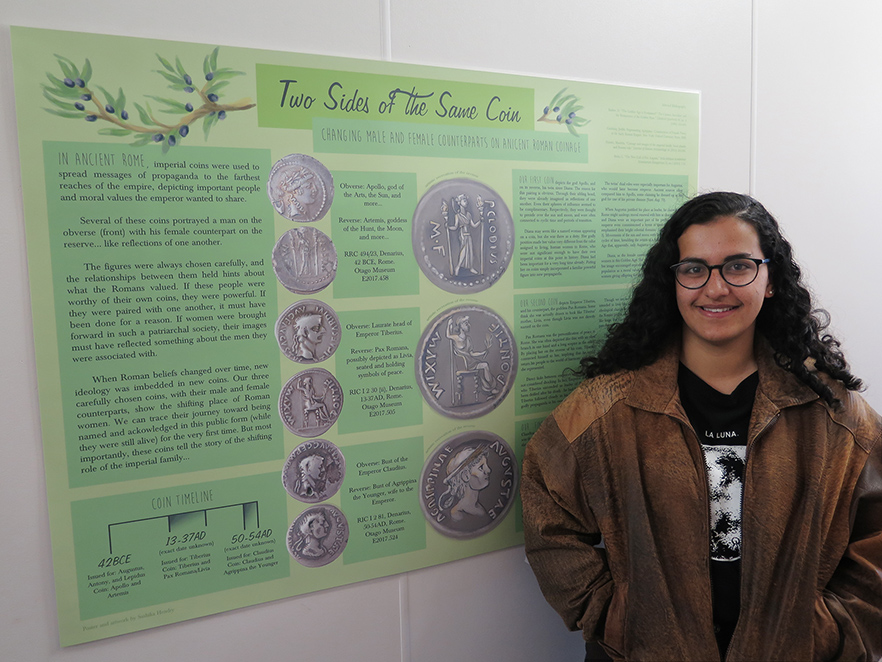
Sashika Hendry with her Roman coin research poster on display in the Arts Building on Dunedin campus.
Performing Arts facility | Te Korkoro o te Tūī
School of Performing Arts
Our new $26 million facility creates a modern, permanent base for most of the School of Performing Arts – Te Kāhui Tau's staff, students and activities, as well as flexible spaces capable of hosting a variety of events.
As well as constructing a new two-storey recording studio building, the project included refurbishing the nearby University of Otago College of Education's music suite, teaching wing, tower block and part of the Education Resource Centre.
The recording building provides state-of-the-art multi-use recording and performance spaces for Otago students and the local Dunedin community. It includes a space with seating for 100 people, two control rooms, recording booths and practice rooms.
Video tour of our Performing Arts facility
Praises sung for Te Korokoro o te Tūī Performing Arts centre
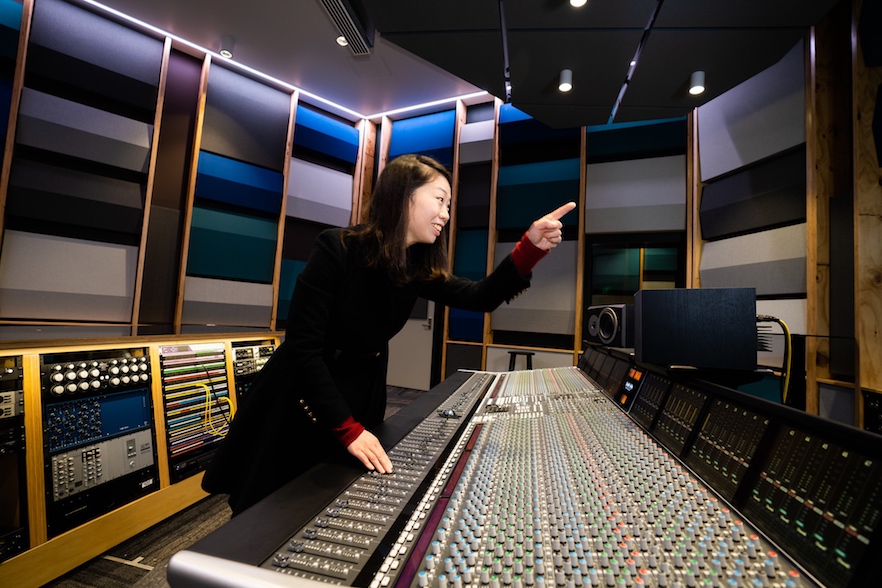
The sound desk in the recording studio of the Performing Arts facility.
PC3 Lab
Department of Microbiology, School of Biomedical Sciences
A Physical Containment level 3 (PC3) facility enables health researchers to safely investigate live pathogens responsible for infectious diseases, at the cellular level. PC3 indicates the second highest level of microorganism containment. The facility uses filters and negative pressure to prevent pathogens escaping. Access to PC3 capability is important to allow researchers to investigate the target pathogen directly.
Many infectious diseases are becoming drug resistant and antibiotics are losing effectiveness as a result. This makes new treatment approaches vitally important. The Lab is integral to the work contributing to our understanding of COVID-19.
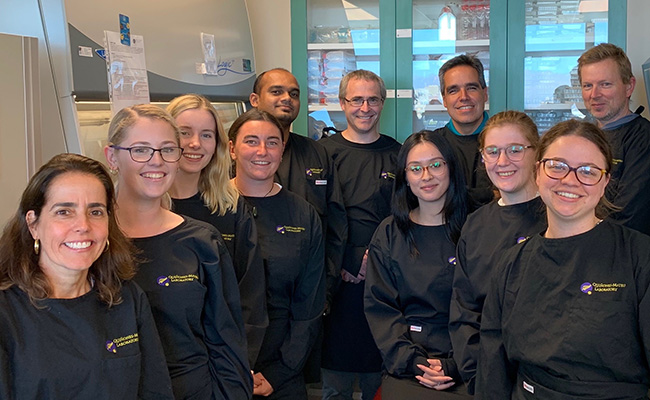
Members of the University of Otago Containment Lab team who are working on understanding COVID-19.
RV Polaris II vessel
Department of Marine Science, Division of Sciences
A number of vessels are available for both inshore and offshore research activities. RV Polaris II has a range of 1,000 nautical miles and regularly makes trips to the sub-antarctic islands. It provides diving support (including tank refilling), winches, trawling, water column chemistry and oceanography, research quality GPS positioning, a wireless computer network, and a wet laboratory.
Starlink revolutionising Polaris II communication
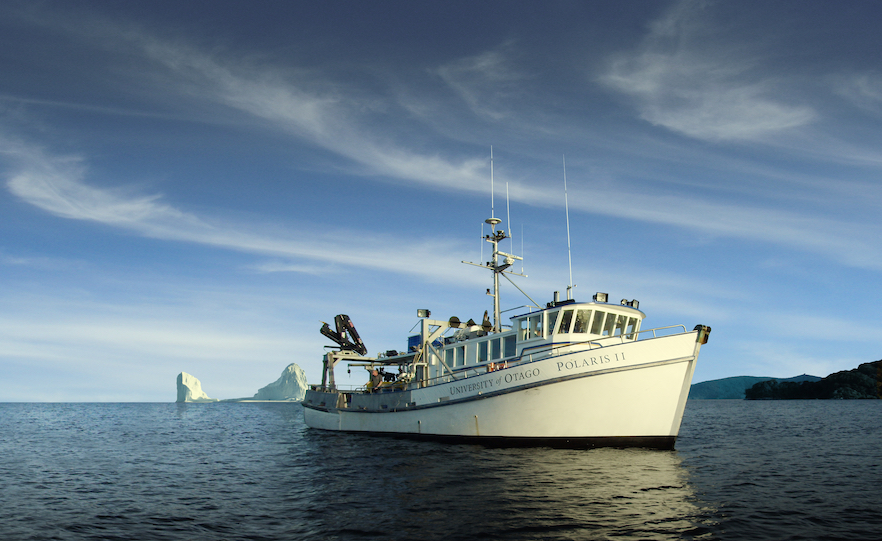
Simulation Centre | Te Whare Whakataruna
University of Otago, Christchurch
The University of Otago, Christchurch Simulation Centre has been developed as part of an Otago Medical School initiative to expand clinical skills programmes and facilities at all three campuses of the University of Otago Division of Health Sciences. It is designed to develop, deliver and support simulation-based education covering a broad range of clinical and professional skills in the undergraduate medical programme (MB ChB) and in other University of Otago, Christchurch courses. The Centre aims to be a place of high quality, safe and enjoyable student learning and to facilitate the transition from undergraduate to postgraduate learning.
Simulation is a field of education that is rapidly expanding within medical and other health professional programmes. The Centre aims to foster close relationships with our academic and clinical colleagues who convene and teach in the undergraduate medical programme and in other UOC courses.
University of Otago, Christchurch Simulation Centre
University of Otago Central Library | Te Whare Pukapuka Matua
The Library provides high quality information resources and services, recognising the diversity and needs of all stakeholders. We strive to be responsive and innovative in our service delivery and to be a vital contributor to the academia of the University.
There are a number of service points across campus where you will find welcoming comfortable facilities suitable for individual and group learning. Assistance with sourcing and evaluating library resources and developing your search skills is readily available from our friendly, knowledgeable staff. The stunning Central Library is located in the award winning Information Services Building. Hocken Collections is one of New Zealand's foremost research libraries and contains many rare historical publications of national and international significance, as well as manuscripts, pictures and photographs.
Dunedin and Invercargill campus
- Central Library (Information Services Building)
- Sir Robert Stout Law Library (Richardson Building)
- Health Sciences Library (Sayers Building)
- Science Library (Science III Building)
- Robertson Library (Union Street East)
- Hocken Library (Anzac Avenue)
- Invercargill Campus Libraries
Northern campuses
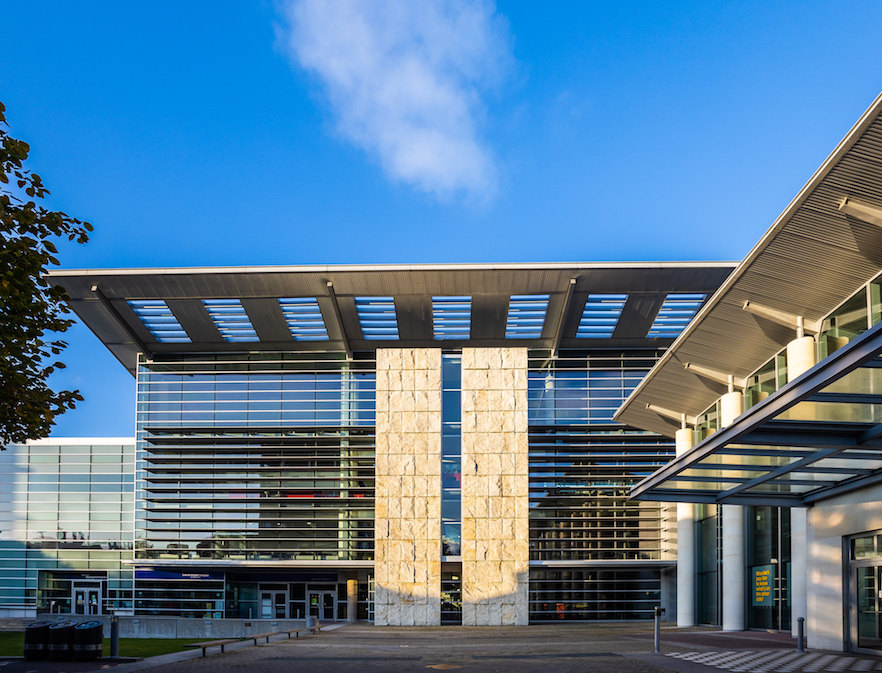
Central Library, Information Services Building, Dunedin Campus.